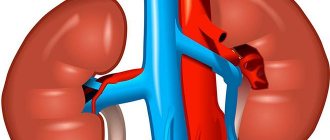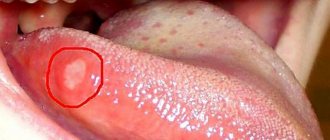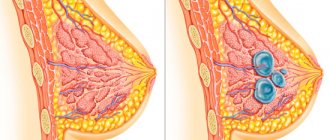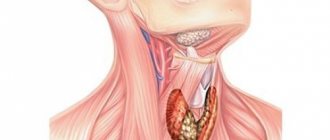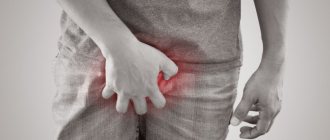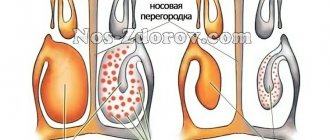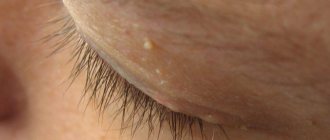And now all the suffering is behind us: contractions, pain, childbirth... And what lies ahead is only the joy of happy motherhood, and nothing can stop you from enjoying this moment. Or maybe?
No matter how sad it is, everything is just beginning. After the birth of a child, a young mother faces a lot of problems, and milk stagnation may be one of them. Why does it appear and what to do with lactostasis in a nursing mother?
Causes
The pathogenetic basis of the described problem remains stagnation of milk and insufficient emptying of the breast during feeding of the newborn. The accumulation of excess fluid creates an environment for the progression of local inflammation. A kind of plug in the mammary gland can occur against the background of various situations.
Common causes of lactostasis:
- Mechanical compression of acini and ducts . Wearing a bra that is too tight is one of the most common factors leading to the disease.
- Insufficient breast emptying . The cause of the corresponding problem is most often the child’s inadequate grasp of the nipple and irregular feeding.
- Physiological characteristics of the body . Lactostasis in a woman can occur due to narrow ducts located in the mammary gland.
- Excessive lactation . If breast milk is produced excessively, the baby does not have time to drink it completely. Remaining fluid accumulates in the ducts of the gland with the progression of typical symptoms of lactostasis.
- Traumatic chest injuries . In this case, the anatomy of the milk ducts is disrupted with an increase in acute clinical symptoms.
- Stress . Emotional instability is dangerous for nursing mothers. Due to overload of the nervous system, the process of milk synthesis may be disrupted.
Understanding the reasons for the development of pathology helps to organize breastfeeding properly. Taking individual medications affects the etiological factor, and not just the symptoms. Early seeking help from a doctor helps prevent the progression of the problem without leading to negative consequences for the body of the mother and child.
Factors of occurrence
The causes of lactostasis are as follows:
- large breasts, which cannot be completely emptied when feeding the baby;
- flat type nipples in a woman;
- poorly developed sucking reflex in the baby;
- a high percentage of milk secretion, which contradicts the baby’s needs;
- an anatomical feature that impedes the natural flow of milk, slowing down the emptying of the breast;
- improper attachment of the baby to the breast;
- cracked nipples;
- large time interval between feedings.
Sometimes the occurrence of lactostasis is not associated with the feeding procedure - it can occur due to injury, hypothermia, or wearing uncomfortable underwear. Often stress situations, inadequate sleep and daily routine can cause problems in the body.
Symptoms
Breast lactostasis is a problem that quickly makes itself felt. Milk retention in the corresponding ducts is accompanied by progression of a pronounced clinical picture.
The most common signs of lactostasis:
- Pain in the chest area . The severity of this symptom depends on the degree of blockage of the ducts and the volume of accumulated fluid.
- Formation of painful lumps . They can be felt even with superficial palpation (palpation).
- Hyperemia (redness) of the skin . Occurs in places where milk stagnates. This sign occurs in 50% of cases.
- Discomfort and pain while feeding the baby . Due to stagnation of fluid in the area of the acini, pressure increases in this place. Over time, local inflammation progresses, which leads to the appearance of corresponding painful symptoms.
It should be noted that, in addition to the described symptoms of lactostasis in a nursing mother, nonspecific manifestations may additionally occur. These include a slight and short-term increase in body temperature, general weakness, fatigue, and anxiety.
Which doctor treats lactostasis?
Doctors of various specialties can treat lactostasis in nursing mothers.
Most often, women encounter this problem in the first months after the birth of their first child due to violation of the rules for putting the baby to the breast. In this case, an obstetrician-gynecologist will come to the rescue and tell you what needs to be done and how exactly. What other doctor can you contact for lactostasis? Advice on proper breast care and qualified medical care can be provided by a local physician, family doctor or pediatrician. It all depends on the specific case and the availability of relevant specialists.
Treatment of lactostasis is often carried out by women without the involvement of medical specialists. Such actions threaten to worsen the patient’s well-being with the progression of local inflammation and the development of mastitis, which requires a more serious and long-term approach to therapy.
Consequences for women's health
If you have lactostasis, you should use heat carefully, as excessive heating can cause infection. During the active stage of reproduction of microorganisms, for which breast milk is the optimal environment, this condition can develop into mastitis.
As a result of improper behavior and actions of a nursing mother during lastostasis, new foci may appear, and high body temperature with characteristic surges may be noted, since milk, in the absence of outflow and damage to the ducts, begins to be absorbed into the blood.
Rate this article
Loading…
- Related Posts
- Compatible antibiotics with breastfeeding
- Nutrition for a nursing woman by month (dos and don’ts)
- What benefits can there be from persimmons during breastfeeding?
Diagnostics
Photo from die-radiologie.de
Diagnosing stagnation of milk in the mammary gland causes almost no difficulties. When examining a woman, the gynecologist pays attention to the presence of typical signs of lactostasis in a nursing mother. Anamnesis is collected and the woman’s complaints are assessed. When palpating the gland, its soreness and compaction in the area of stagnation are noted.
To clarify the diagnosis and exclude serious pathology, the following additional methods are used:
- ultrasound examination of the breast;
- General and biochemical blood test.
If there are signs of dysfunction of other internal organs, the woman is referred for consultation to related specialists.
Is it worth breastfeeding a child with lactostasis?
Basic help with lactostasis is to free the ducts and acini inside the breast from milk. Therefore, it is imperative to continue breastfeeding the baby if the problem described is present. It is also recommended to increase the number and duration of feedings.
No artificial formula can replace breastfeeding. It is useful not only for the child, but also has a beneficial effect on the hormonal and emotional background of a woman.
According to modern recommendations of pediatricians, obstetricians and gynecologists, breastfeeding should be done for at least the first 6 months. This approach helps prevent the development of diseases in both the baby and the mother.
Massage technique
Massage is very useful for stagnation of milk. However, this procedure must be followed correctly. Otherwise, the pathology can be aggravated.
In case of lactostasis during massage, the following rules should be observed:
- The main goal of the procedure is to relax the seal. Therefore, forceful pressing must be avoided.
- You need to start massaging at the base of the breast and move towards the nipple. This way you help the milk leave the ducts.
- It is recommended to perform a clockwise spiral motion.
- If a light massage causes painful discomfort, then carry out the procedure in the shower. But remember that the water should be warm, but in no case hot.
Treatment
It is relatively simple to completely remove lactostasis that occurs in a nursing mother. It is not necessary to take pills. In 95% of cases, stagnation of milk in the gland is eliminated using non-drug methods that help free the acini and ducts from excess fluid.
Measures to improve milk drainage:
- High-quality baby's nipple latch . If the seal is insufficient, you can use suction. At the time of treatment, the mother needs to completely abandon various bottles that disrupt the baby’s latching technique.
- Alternating breasts . It is necessary with each feeding to ensure normal fluid outflow.
- Massage . It should be smooth and gentle, and movements are carried out from the periphery of the gland to its center.
- Applying dry heat to the gland . After the heat, you should cool your breasts with ice wrapped in a cloth.
- Pumping . The diseased mammary gland must be expressed before each feeding.
In most cases, in the absence of complications of lactostasis, the woman’s well-being improves without taking any medications. Therefore, you should not take medications on your own, but rather seek advice from a qualified specialist.
Folk remedies can only be used as an auxiliary therapy. The use of various infusions, compresses and lotions does not guarantee the achievement of the desired result. In home practice, cabbage leaves, which are applied to the chest, have become especially popular, as well as bandages with chamomile infusion, and cottage cheese cakes.
Reviews
I encountered this problem on Friday evening, so I couldn’t turn anywhere other than the Internet. No one told me that after feeding I definitely need to express the milk completely, so when I found out about it, it was already too late. One breast became 2.5 times larger than the other. hard as a brick, the temperature rose to 38.9, the part of the chest where lactostasis formed turned red. After using alcohol compresses, massage and using a breast pump, things started to improve. Although the redness still lingers and the pain remains. But I hope that everything will work out. Now I am interested in the question: can one breast produce more milk throughout the entire period of feeding a child? Since its size has not decreased and the amount of milk is incomparably greater than in the other.
Olga, https://www.7ya.ru/article/Laktostaz/
It is imperative to strain this place so as not to provoke mastitis. You can drink no-shpa before pumping to improve flow. The child will suck best. it must be applied so that the chin “looks” at the sore spot. Well, and a cabbage leaf. Well, at least let your husband help :)
FIFA, https://www.woman.ru/kids/baby/thread/4034926/
Pump your breasts after no-shpa under a warm shower for a long, long time, carefully kneading all the lumps (just try gently and delicately) I had such a case, I pumped and strained, but the pain in the chest remained, as it seemed to me, and the lumps were in the chest, I was afraid that there might be mastitis and I went to the maternity hospital, and there the doctor looked and felt and said that I was smart and had processed everything well.. I say: it still hurts so much!! and there are lumps here and there... and she: it may still hurt for a couple of days, because you have squeezed your breasts too much, and you can simply feel the lumps, these are already glands, she said you can drink half of paracetamol, put cabbage leaves on top, a plastic bag and a bra on top (walk all day, change more often, and you also have to beat the sheets as if with a knife handle so that they let out the juice) gradually it really went away.
Marmyshka, https://www.woman.ru/kids/baby/thread/4034926/
Prevention
Prevention of lactostasis consists of following the rules of breastfeeding, which can be explained by a pediatrician, obstetrician or gynecologist. Additionally, it is recommended to wear comfortable underwear that does not compress the chest. Mothers need to avoid smoking, alcohol and other bad habits.
Lactostasis is a problem that can be solved quickly. The main thing is to follow the rules of breastfeeding a child. In 99% of cases, milk stagnation does not cause serious dysfunction of the mammary gland. The sooner a woman seeks help from a doctor, the higher the chance of a quick recovery without any negative consequences for her and the newborn.
Author: Denis Volynsky, doctor, especially for Mama66.ru
Useful video about lactostasis
List of sources:
- Ya. Ya. Yakovlev, F. K. Manerov. Lactostasis and lactation mastitis in pediatric practice // Siberian Medical Review. — 2020. — No. 2. — P. 32-41.
- Zh.Z. Alexandrenko. Postpartum mastitis in the practice of a clinic doctor // Medicine. - 2012. - No. 2. — pp. 13-14.
Author
Denis Volynsky
Therapist
Graduated from Ivano-Frankivsk National Medical University. Experience as a therapist - 3 years. Writes articles on various medical topics in order to develop in different directions. All articles by the author
I like!

